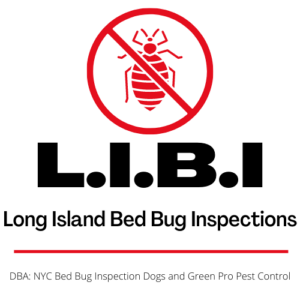When the temperature drops and winter settles in many household pests will disappear, hibernate, or die off until warmer weather returns. Unfortunately, bed bugs do not. These resilient pests are survivors, and winter offers them some unique opportunities to thrive. Understanding how bed bugs behave during the colder months is essential to protecting your home or business from potential infestations.
Do Bed Bugs Die In Winter?
A common misconception is that cold weather kills bed bugs. While it’s true that freezing temperatures can harm them, it rarely happens indoors where bed bugs typically live. These are indoor pests that rely on humans for warmth, shelter and food. All of which remain available even in the depths of winter.
Outdoors, bed bugs cannot survive long in extreme cold. Studies have shown that they will begin to die when exposed to sub-zero temperatures for several days. However, most infestations occur in heated buildings where temps remain comfortable year round. This means bed bugs can continue feeding, breeding and spreading even when there’s snow on the ground.
How Do Bed Bugs Behave During Winter?
While bed bugs don’t hibernate in the traditional sense, when temperatures drop their metabolism slows and they become less active. Particularly if food sources are not readily available. In an unoccupied home, for example, bed bugs can enter a semi-dormant state and survive for months without feeding.
In occupied buildings, the story is different. Bed bugs will pursue their normal routine, hiding by day and feeding by night. Winter even offers them some advantages that they are happy to exploit:
-
Heated environments make survival easier.
-
More indoor time for humans means bed bugs have consistent access to their hosts.
-
Travel and holidays increase the opportunities for bed bugs to spread via luggage, clothing and bedding.
While other pests slow down in winter, bed bugs quietly continue to thrive unnoticed as infestations grow.
How Does Winter Travel Affect Bed Bug Infestations?
The winter holiday season is a gift for traveling bed bugs. Millions of us stay in hotels and motels while visiting family and friends. And these aren’t fly-by-night rentals. Even clean, upscale, accommodations can be home to bed bugs.
These pests are hitchhikers. They cling to luggage, coats, and other personal items as the move from place to place. This is one of the primary ways bed bugs spread.
To reduce the risk while traveling follow these tips:
-
Inspect hotel and motel rooms before unpacking Check mattress seams and furniture crevices for stains, shed skins, and live bed bugs.
-
Keep luggage elevated on a suitcase rack. Avoid leaving luggage or clothing on the bed or carpeting.
-
Use protective luggage liners or plastic bags for clothing.
-
Launder everything thoroughly on high heat when you return home.
How to Recognize a Winter Infestation
Because bed bugs remain active throughout the year, an infestation in winter will look the same as it does at any other time. The common signs to watch for include:
-
Bites – Small, itchy welts that may appear in clusters on exposed areas of the body.
-
Dark Stains – Bed bug fecal spots on sheets, mattresses or furniture.
-
Shed Skins – As bed bugs grow they shed there skin. Discarded exoskeletons can be a sign of major infestation.
-
Eggs – Small white eggs may be found in mattress seams or along baseboards.
-
Live Bugs – Bed bugs are small, rust colored, and approximately the size of an apple seed.
How to Prevent Winter-Time Bed Bugs Infestations
No matter the season, prevention is the key to battling bed bugs. Avoiding an infestation is easier and more effective than treating one.
Here are some winter specific tips to help you avoid a holiday headache:
-
Inspect Holiday Gifts – Bed bugs can hide in unlikely places. Luggage, upholstered furniture, and even electronics can act as temporary homes for hungry bed bugs. Inspect your holiday gifts for signs of bed bugs, especially if they’re vintage or secondhand.
-
Use Mattress Encasements – Mattress encasements help to trap bed bugs, making it easier to monitor your home for potential invaders.
-
Declutter – This is not about cleanliness. It’s about clutter. Bed bugs thrive in cluttered environments. It gives them more places to hide.
-
Be Cautious About Visitors – No one ever means to bring bed bugs into a home. However, guests can unknowingly bring them in from other infested environments. After guests leave, vacuum and inspect sleeping areas.
-
Schedule an Inspection – If you suspect bed bug activity, or you just want some reassurance after an exceptionally busy holiday season, have a pest control expert perform a thorough winter inspection.
Winter Bed Bug Challenges
Cold weather doesn’t make bed bug control any easier. In fact, it can complicate matters. Because homes are sealed tight for warmth, infestations can spread more efficiently from room to room. Reliable treatment options are the same in winter as they are throughout the year. Heat, steam and bio-pesticides are the most effective options regardless of weather.
Bed bugs are masters of adaptation, and winter is no obstacle to their survival. While the cold may slow them slightly, the warmth of our homes, offices, and travel destinations keeps them thriving year-round. The key to protecting yourself lies in awareness, prevention, and prompt professional action.
Whether through careful travel habits, routine inspections, or successful professional treatments, you can enjoy a bed bug-free winter season — no matter how cold it gets outside.
Published by Scott Palatnik
We are Bedbug Inspection & Elimination specialists.
From Manhattan to Montauk and all points in between.
Got questions?
We got answers.
Give us a call @ 516-619-6149


